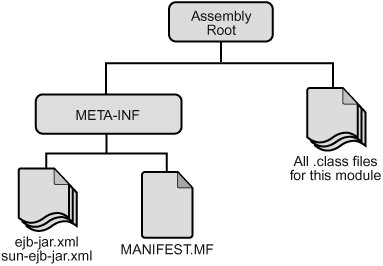The Contents of an Enterprise Bean
| To develop an enterprise bean, you must provide the following files:
You package the files in the preceding list into an EJB JAR file, the module that stores the enterprise bean. An EJB JAR file is portable and can be used for different applications. To assemble a Java EE application, you package one or more modulessuch as EJB JAR filesinto an EAR file, the archive file that holds the application. When you deploy the EAR file that contains the bean's EJB JAR file, you also deploy the enterprise bean to the Application Server. You can also deploy an EJB JAR that is not contained in an EAR file. Figure 202 shows the contents of an EJB JAR file. Figure 202. Structure of an Enterprise Bean JAR |
